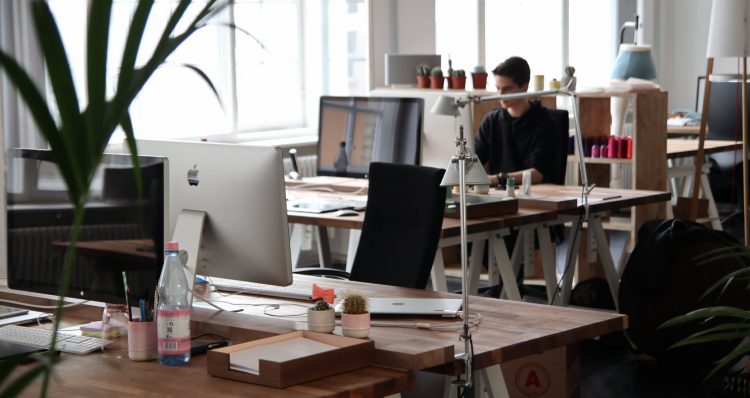
Towards A Better Commercial Interior Design
bianca | April 3, 2019 | 0 | My Blog , Tech in ArtDESIGNING FOR COMMERCIAL SPACE
Designing for commercial space is arguably the toughest form of interior design due to the extensive diversity of character types which exist amongst team members employed for organizations. In this context, commercial space refers less about spaces in generalised commercial environment such as, say, a luxury accommodation in Tasmania, but more about the various working environment which transcends boundaries on places from around the world. Designers will consequently display a natural ability to communicate with many different types of people so as to understand their individual needs. In addition to dealing with members of employees, building contractors and situations involving a change in management, an interior designer’s ultimate goal is to make workspaces that maintain the company corporate culture and increase the learning, motivation and wellbeing of employees.
AGILE SPACES Agile functioning is a concept that is guided by complicated strategic planning in order to help produce workspaces that are intelligently designed to allow for maximum productivity of all staff by utilizing the best of technology and staff experience. Flexible office operations are also utilized to help empower staff and invite them to feel motivated on the job to be able to help the business grow. In Hobart, people flock towards jobs that applies this sense of agile design in their spaces. An actual agile workspace aims to reinstate private area for employees by producing distinctive zones at the office where they choose to occupy depending on the job at hand. The benefits of having an agile working space includes:
- Reduction in real estate portfolios
- Reduced running costs
- Reduced absenteeism
- Decreased attrition
- Improvement in company productivity / Ability
- Improved sense of job security and wellbeing
- A sense of personal achievement / enhanced productivity
- Better work/life balance
- A boost in workplace affinity
- Improved morale throughout the organisation.
Finally, an agile workspace should include the following:
- Learning and assembly places
- Collaboration areas
- Social areas
- Focus places
- Welfare areas
- Concentration areas
- Meeting room/guest areas.
If you are wanting a completely optimised workspace that is designed specifically to suit the needs of the folks inside your organization, your brand and your company culture…you may want to have an agile working space. Nowadays more than ever, communicating is linked to the pinnacle of business success. Advocated to seem like universities so as to give people with opportunities for self-improvement and better well-being, well-designed agile workspaces with integrated technology will help to boost communication processes and improve message delivery. Even conference venues in Melbourne have used this as their underlying design principle.
ROLE OF THE DESIGNER IN COMMERCIAL WORKSPACES
A designer, who specialises in office design, and/or a workplace strategist, could be hired according to their ability to problem solve and make an intelligent workspace which matches to the clients’ original timeframe, company objectives and budget. They are going to have studied subjects like colour psychology, acoustics from the office and common issues that arise in the workplace, often relating to poor communication, low levels of engagement and decreased motivation as a consequence of the inadequate quality of the distance they function in. Not only utilised in the design of office spaces, but this knowledge can also be applied to public speaking or a place for corporate gatherings, as evidence of its studies can be seen on formal venues all around Melbourne. The designer will evaluate different personalities which exist amongst the staff working for the organization the spatial capacity of the workplace in addition to the business culture, in order to think of a design solution that’s secure, is functional, is aesthetically pleasing also helps improve quality of lifestyle. By running a workplace inspection, this assists the interior designer to spot a balance between the various personality types within the organization as well as the level of achievable increase in productivity levels, in addition to helping to greatly reduce real estate occupancy savings based on the distance available.
 OTHER FACTORS FOR GREAT COMMERCIAL SPACE DESIGN
OTHER FACTORS FOR GREAT COMMERCIAL SPACE DESIGN
In a corporate setting, interior design is not only about choosing a great blueprint for your accent wall or making sure the couch in the waiting room works using a company’s brand colours, corporate or office interior design entails many factors that designers from companies such as Kardent Design say are crucial. This quick blog post explores some behind the scene details of what it’s like to design amazing company areas which function for everyone who uses them.
Corporate Interior Design Involves Multi-Party Collaboration
Whether working at an architecture firm, designing house, or independently, corporate interior designers are in the core of every project.
In a corporate inside project, the designer has to have eyes on many distinct aspects of the space. The finished look is the obligation of the interior designer, however, many factors enter producing that finished appearance, and the situations you have to consider may not always be evident. Designers have to coordinate with contractors, and vendors, and therefore understand building and fire code. There is a lot to think about, with many sellers to work with and knowing the proper ways to collaborate is essential.
“Designers and Engineers bring knowledge and experience to a job by maintaining on current code requirements, pricing criteria and workplace trends,” says Kate Smiley of Kardent.
Great Designers Know the Client’s Business Strategy
An interior designer need to understand the client’s business plan in order to effectively design a corporate area that functions to attract those business goals to life. While knowing the intricacies of HR policies, or bookkeeping techniques are not necessary, understanding the types of company functionalities that need to be carried out in the space really helps in obtaining project achievement.
Understanding the client’s business strategy means knowing the forms of meetings, presentations, and collaborations that have to happen on a regular basis. It means understanding the way work flows from 1 department or division to another. All these movements impact how space needs to be configured, and how it needs to function.
Audiovisual Technology is a Huge Part of Business Interior Design
When designing a corporate interior, designers and architects must consider audiovisual and communication technology, because relations, cables, mounts and power supplies must be configured to coalesce together with the planned UC environment. There’s nothing more detrimental to the success of a project than introducing a gorgeous new space to a client, and then having to rip up carpet because electricity supplies in a presentation space were not considered prior to building. Understanding about audiovisual technology and how to integrate them may be difficult. That is why finding a fantastic audiovisual partner in the design-build phase is essential.







